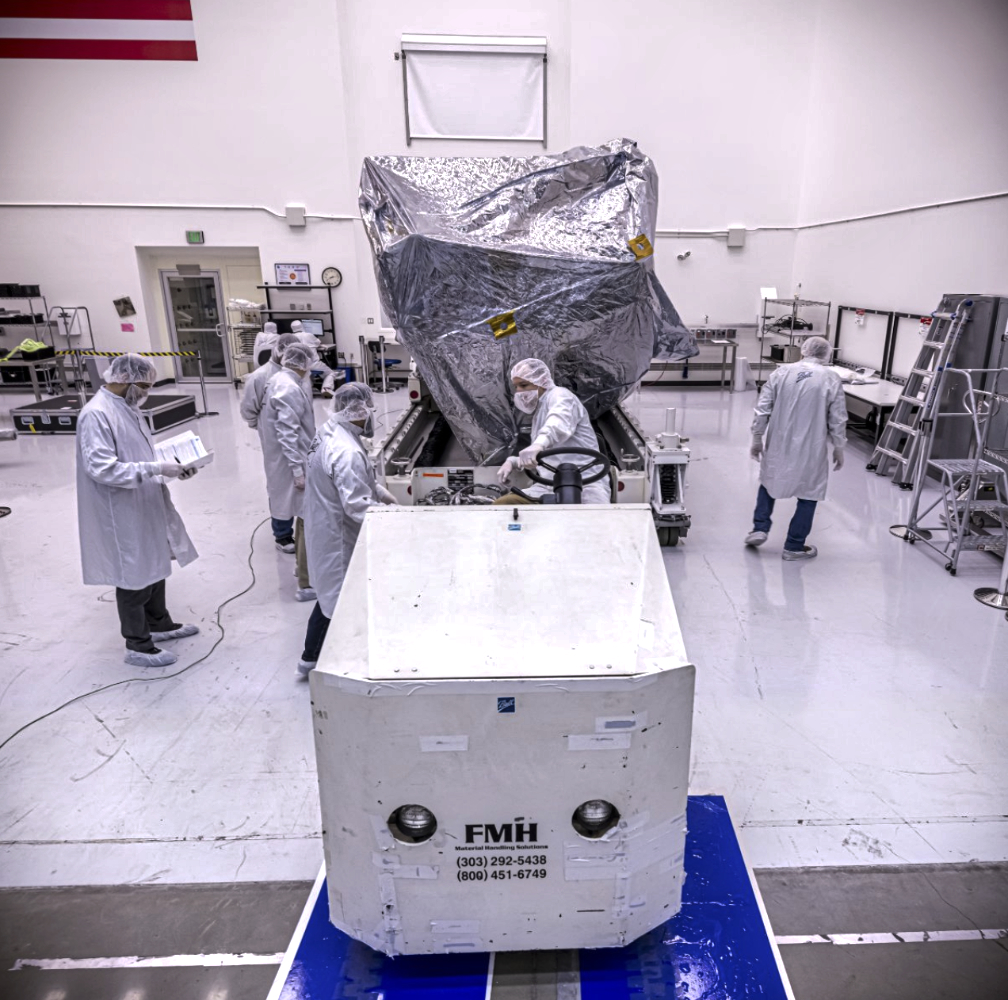
Space Systems Command (SSC) has successfully delivered the U.S. Space Force (USSF)-62 Weather System Follow-on – Microwave (WSF-M) Space Vehicle (SV) from Ball Aerospace, Boulder, Colorado, to Vandenberg Space Force Base, California, where it will be processed at the Space Vehicle processing facility.

The satellite will undergo a series of post-shipment functional testing, followed by the loading of onboard propellant. After accomplishing these vital testing procedures, the WSF-M satellite will enter the encapsulation phase, after which the payload will be horizontally integrated with the SpaceX Falcon 9 launch vehicle before its voyage to space projected for late March.

Under the leadership of SSC Space Sensing’s Environmental and Tactical Surveillance program office, the WSF-M satellite is the first of two satellites that Ball Aerospace will deliver. This innovative spacecraft represents a new era in the U.S. Space Force’s next generation of modernized, space-based environmental monitoring (SBEM) systems that will augment capabilities provided by the legacy Defense Meteorological Satellite Program (DMSP).

Airman 1st Class Ryan Quijas.
WSF-M will enable the production of enhanced weather prediction and analysis capabilities for joint warfighters conducting mission planning and operations globally.
“This delivery represents a major milestone for the WSF-M program and is a critical step towards putting the first WSF-M satellite on-orbit for the warfighter,” said Col. Daniel Visosky, senior materiel leader, SSC’s Space Sensing Environmental and Tactical Surveillance program office. “It represents a long-term collaboration and unity-of-effort between the Space Force and our combined teams at Ball Aerospace, support contractors and government personnel.”
“The WSF-M satellite is a strategic solution tailored to address three high-priority Department of Defense SBEM gaps – specifically, ocean surface vector winds, tropical cyclone intensity, and energetic charged particles in low Earth orbit,” said David Betz, WSF-M program manager, SSC Space Sensing. “Beyond these primary capabilities, our instruments also provide vital data on sea ice characterization, soil moisture, and snow depth.”
Space Systems Command is the U.S. Space Force’s field command responsible for acquiring, developing, and delivering resilient capabilities and groundbreaking technologies to protect our nation’s strategic advantage in and from space. SSC manages an $15.6 billion space acquisition budget for the Department of Defense and works in partnership with joint forces, industry, government agencies, academic and allied organizations to accelerate innovation and outpace emerging threats. Our actions today are making the world a better space for tomorrow.
